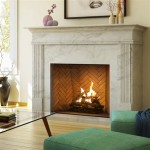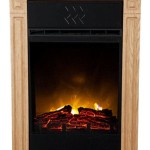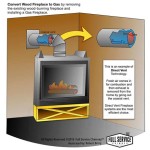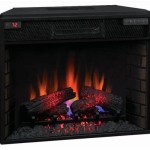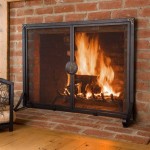What Is an Electric Fireplace?
An electric fireplace is a heating appliance that mimics the appearance and ambiance of a traditional fireplace but operates on electricity rather than burning wood, gas, or other combustible fuels. It's essentially a sophisticated space heater combined with a visual display designed to simulate flames and embers. Electric fireplaces have gained popularity as a convenient, safe, and efficient alternative to traditional fireplaces, particularly in homes, apartments, and other spaces where installing a conventional fireplace might be impractical or prohibited.
The core function of an electric fireplace is to provide supplemental heat to a room. While the primary appeal often lies in its aesthetic qualities, the heating capabilities make it a functional and practical addition to living spaces. They come in a wide variety of styles, sizes, and mounting options, allowing for integration into various interior design schemes. From freestanding units to wall-mounted models and fireplace inserts, there's an electric fireplace to suit nearly any space and budget.
Understanding the inner workings of an electric fireplace involves examining its key components and how they interact to produce both heat and the visual illusion of flames. Several technologies are employed to generate the flame effect, contributing to the realism and visual appeal of the appliance. The heating mechanisms also vary, influencing the efficiency and heat output of the fireplace. The following sections will delve into these aspects in more detail, providing a comprehensive overview of electric fireplaces.
Key Components and Functionality
At its most basic, an electric fireplace comprises a heating element, a flame effect mechanism, a control panel, and a housing or cabinet. The heating element is responsible for generating heat, while the flame effect mechanism creates the visual illusion of a fire. The control panel allows users to adjust the settings, such as the heat output, flame intensity, and brightness. The housing or cabinet provides the structural support and aesthetic appeal of the fireplace.
The heating element typically utilizes either a fan-forced coil or an infrared quartz heating system. Fan-forced coils operate by passing air over a heated coil, distributing the warm air into the room via a fan. This is a common and relatively inexpensive heating method. Infrared quartz heating, on the other hand, uses infrared radiation to directly heat objects and people in the room, offering a more efficient and targeted heating experience. Infrared quartz heating is often perceived as providing a more comfortable and evenly distributed heat compared to fan-forced systems.
The flame effect is achieved through various technological means. Early models often used rotating mirrors and lights to create a flickering effect. Modern electric fireplaces utilize more sophisticated technologies, such as LED lights and digital displays, to produce more realistic and customizable flame patterns. Some models even incorporate holographic technology to project three-dimensional flames, enhancing the realism even further. Adjustments to the flame color, brightness, and speed are commonly available, allowing users to personalize the visual experience.
The control panel provides access to the various settings of the electric fireplace. These settings typically include power on/off, heat output level, flame effect intensity, and timer functions. Many electric fireplaces also come with a remote control, offering convenient operation from across the room. More advanced models may incorporate features such as thermostat control, which automatically adjusts the heat output to maintain a desired room temperature, and sleep timers, which automatically turn off the fireplace after a set period.
Advantages of Electric Fireplaces
Electric fireplaces offer numerous advantages over traditional fireplaces, contributing to their increasing popularity. These advantages include ease of installation, safety, energy efficiency, versatility, and low maintenance requirements.
Installation of an electric fireplace is typically straightforward, requiring only a standard electrical outlet. Unlike traditional fireplaces, there is no need for venting, gas lines, or chimney construction. This makes electric fireplaces a convenient option for homes and apartments where installing a traditional fireplace would be difficult or impossible. The portability of many electric fireplace models allows for easy relocation within a room or from one room to another.
Safety is a significant advantage of electric fireplaces. Since they do not burn any fuel, there is no risk of carbon monoxide poisoning, sparks, or uncontrolled flames. The surface of the fireplace typically remains cool to the touch, reducing the risk of burns, particularly for children and pets. This makes electric fireplaces a safer option for families with young children or pets.
Energy efficiency is another compelling benefit of electric fireplaces. They only consume electricity when in use, and the heating element can be turned off while still enjoying the flame effect. This allows users to enjoy the ambiance of a fire without generating heat, making them a practical option during warmer months. The targeted heating provided by electric fireplaces can also help reduce overall energy consumption by allowing users to heat only the room they are occupying, rather than heating the entire house.
Versatility is a key attribute of electric fireplaces. They are available in a wide range of styles, sizes, and mounting options, allowing for integration into various interior design schemes. From traditional mantel styles to modern wall-mounted designs, there is an electric fireplace to complement any décor. The ability to adjust the flame color, brightness, and speed further enhances the versatility of these appliances.
Low maintenance is a significant advantage of electric fireplaces. Unlike traditional fireplaces, there is no need to clean up ashes, sweep chimneys, or store firewood. The only maintenance typically required is occasional dusting and replacement of light bulbs or LED lights, which have a long lifespan. This makes electric fireplaces a convenient and hassle-free option for homeowners.
Types of Electric Fireplaces
The market offers a wide variety of electric fireplace types, each with its own unique features, aesthetics, and installation requirements. Understanding the different types available can help consumers choose the best option for their specific needs and preferences. Common types include freestanding electric fireplaces, wall-mounted electric fireplaces, electric fireplace inserts, and electric fireplace media consoles.
Freestanding electric fireplaces are portable units that can be placed anywhere in a room with access to an electrical outlet. They typically feature a cabinet or housing that resembles a traditional fireplace mantel. Freestanding models are easy to install and relocate, making them a versatile option for renters or those who frequently rearrange their furniture. They are available in a wide range of styles, from traditional to contemporary, and in various sizes to suit different room sizes.
Wall-mounted electric fireplaces are designed to be mounted directly on a wall, creating a sleek and modern look. They often feature a slim profile and a frameless design, making them a popular choice for contemporary homes. Wall-mounted models can be easily installed by following the manufacturer's instructions, and they typically come with mounting hardware. They are a space-saving option, particularly in smaller rooms, and can add a touch of elegance to any décor.
Electric fireplace inserts are designed to be installed into existing fireplace openings, converting a traditional fireplace into an electric fireplace. They are a convenient option for homeowners who want to enjoy the ambiance of a fireplace without the hassle of wood-burning or gas-burning. Electric fireplace inserts come in various sizes to fit different fireplace openings, and they typically feature a realistic flame effect and adjustable heat settings. They are a relatively easy way to update an existing fireplace and improve its energy efficiency.
Electric fireplace media consoles combine the functionality of an electric fireplace with the storage and display capabilities of a media console. They typically feature a built-in electric fireplace surrounded by shelves, cabinets, and drawers for storing electronic devices, media collections, and other items. Electric fireplace media consoles are a practical and stylish option for living rooms and entertainment rooms. They provide a focal point for the room while also offering ample storage space.
Choosing the right type of electric fireplace depends on various factors, including the size and style of the room, the desired level of heat output, and the budget. Considering these factors carefully can help consumers make an informed decision and select an electric fireplace that meets their specific needs and preferences.

10 Reasons To Buy An Electric Fireplace Twin Star Hometwin International

Here S All The Facts And Questions To Know About Electric Fireplaces

What Is An Electric Fireplace Elephant Energy

Electric Fireplace Modern Flames
.aspx?strip=all)
Top 11 Electric Fireplace Questions Faq Regency

ᑕ❶ᑐ How Does An Electric Fireplace Heater Work Magikflame

Electric Fireplace Guide

60 Inch Recessed Wall Mounted Electric Fireplace 750 1500w Remote Oneinmil
:max_bytes(150000):strip_icc()/spr-primary-electric-fireplaces-hwortock-002-871af259a2d84e0fb5a44e75a320ae3d.jpg?strip=all)
The 9 Best Electric Fireplace Heaters Of 2024 Tested And Reviewed

ᑕ❶ᑐ Wall Mounted Electric Fireplace Basic Guide 2024


